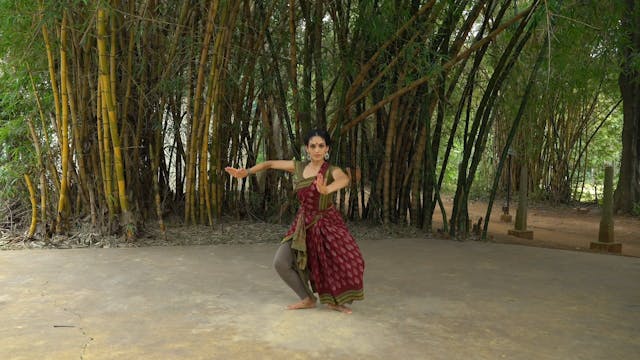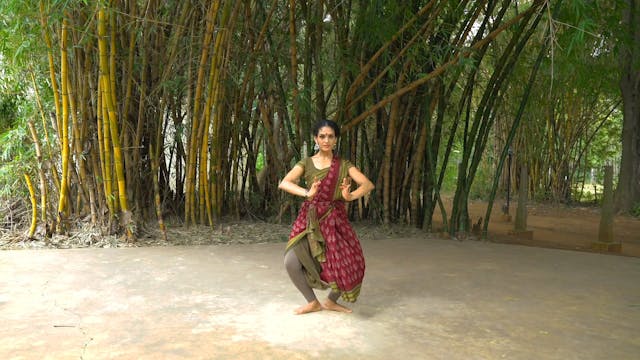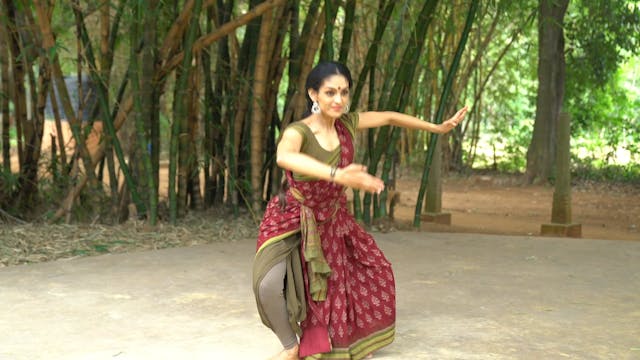The Theermana or Makutadavu, is placed at the end of a Korwe or Jathi in specific rhythmic patterns, to create an ending.
The leg is either placed outstretched directly in front or at a diagonal of 45 degrees. The foot is flexed and the heel strikes the floor. In the Raadha Kalpa method we begin with the leg at 45 degrees. The other variation is introduced at a later stage.
Things to keep in mind.
- Make certain to strike the floor for all the beats. The second beat of the supporting leg is usually neglected.
- Stretch your leg completely. There is a tendency to leave the knee slightly bent sometimes.
- Stretch your arm completely to the back in all speeds.
Up Next in Adavus: 1st Set
-
Theermana Adavu 1, variation
The Theermana or Makutadavu, is placed at the end of a Korwe or Jathi in specific rhythmic patterns, to create an ending.
The leg is either placed outstretched directly in front or at a diagonal of 45 degrees. The foot is flexed and the heel strikes the floor. In the Raadha Kalpa method we begi...
-
Theermana Adavu 2
The Theermana or Makutadavu, is placed at the end of a Korwe or Jathi in specific rhythmic patterns, to create an ending.
The leg is either placed outstretched directly in front or at a diagonal of 45 degrees. The foot is flexed and the heel strikes the floor. In the Raadha Kalpa method we begi...
-
Theermana Adavu 2, variation
The Theermana or Makutadavu, is placed at the end of a Korwe or Jathi in specific rhythmic patterns, to create an ending.
The leg is either placed outstretched directly in front or at a diagonal of 45 degrees. The foot is flexed and the heel strikes the floor. In the Raadha Kalpa method we begi...


